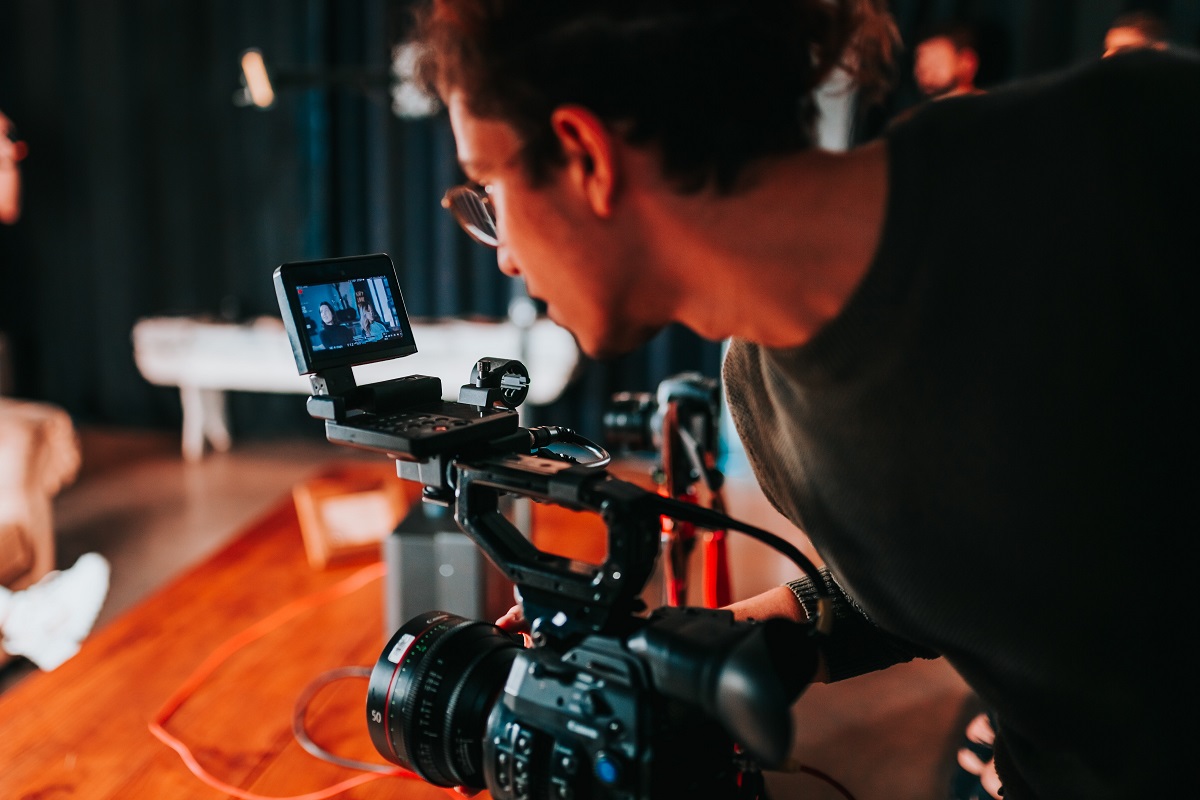5 Ways Filmmakers Benefit From Movie NFTs

It’s safe to say that filmmakers are Hollywood’s lifeblood. That may sound a little dramatic, but think about it – over the years, they’re the ones who have completely refined the way we see and think about movies. The Russo Brothers made nerds around the world feel things with the Avengers franchise. Quentin Tarantino dropped cult classic after cult classic from Pulp Fiction to Django Unchained. Christopher Nolan wove and bent the laws of physics to his imagination time after time.
Regardless of what type of movies you love, there’s definitely at least one filmmaker blazing the trail in that genre. The problem, however, is that numerous other filmmakers are still looking for that one big break. And for those people, non-fungible tokens (NFTs) could be the final piece of the puzzle – the innovation that helps them break into the limelight.
Know what’s even better? Several established filmmakers have already jumped on this technology and are using NFTs for the film industry. So, what’s so special about these tokens? How do NFTs and filmmakers merge, and what opportunities does this innovation hold? Let’s take a look at some of the ways filmmakers benefit from movie NFTs, and how you – an aspiring Tarantino or Scorsese – can do the same.
A Quick Look: What Are Movie NFTs?
A non-fungible token (NFT) is a digital asset that acts as a digital representation of something physical. You can have NFTs that represent movies, artwork, music, and even tweets! As long as it has a physical form, it can be turned into an NFT and stored on a data structure known as a blockchain.
The primary difference between NFTs and other blockchain assets, such as cryptocurrencies, is that NFTs can’t be exchanged for each other while maintaining the same value.
So, what are NFTs in the film industry? Simple – a movie can be made and turned into an NFT, then sold and distributed to an audience.

How Filmmakers Can Benefit From NFTs
NFTs became especially popular between 2019 and 2021. While most of the popular ones you see are representations of artwork, NFTs and filmmakers appear to be the new match made in Hollywood heaven.
So, how are NFTs shaping the film industry? Let’s investigate some of the ways filmmakers benefit from movie NFTs.
1. Movie Funding
The first and likely most prominent benefit of NFTs for the film industry is that of funding.
Talk to a filmmaker today, and they’ll tell you all about the challenges they face with raising funds for their projects. This is especially true for passion-fueled, independent projects. Unless you’ve got a big name and reputation, finding a movie studio or an investor to back your project will be difficult.
Even if you do, investors and studios would most likely end up taking a significant portion of the profits your movie makes, potentially leaving you with little to show for it. But NFTs have shown that they can break this cycle. Filmmakers can raise funds by selling their movies as NFTs, eventually breaking their reliance on big movie studios.
Miguel Faus, an independent filmmaker, made his dreams come true in 2022 when he raised funds for his movie Calladita. Instead of waiting for a big studio to finance it, he sold NFTs to raise the money. Alternatively, some filmmakers sell personal projects as NFTs to raise money. Julie Pacino, the daughter of Oscar-winning actor Al Pacino, sold an NFT collection called I Live Here Now to finance her movie. One hundred NFTs were sold in total at 1.75 ETH each, netting her almost $80,000.
Looking for money to fund your movie? NFTs could just be what you need.
2. Collaboration And Community-Building
It takes a village to raise a child. The same saying rings true for movies too. Over the past few years, community-building has become important for the art space. But with most creators and their fans being in different cities all over the world, getting a consensus on projects can be challenging.
Although this is one of the lesser-known uses of NFTs, it could be one of its most important. With these tokens, you can collaborate with other creators and even let your fans have a say in what you do next.
A great example of this is Spike Lee – one of this generation’s most prolific writers and filmmakers. This year, Lee partnered with The Visible Project, a filmmaking community, to create NFTs based on the character Mark Blackmon from his 1994 movie, She’s Gotta Have It.
With The Visible Project, Lee is looking to create a community that supports independent filmmakers. NFT holders within this community will be able to vote on the movies that get funded, as well as projects they would like to see.
Sometimes, the best way to make movies is to let the fans tell you what they want to watch. And with NFTs, you can do just that.
3. Creating A Legacy
NFTs could also be the right tool to help you build a proper legacy – even as a beginner moviemaker.
NFTs involve something called a “royalty.” Simply put, anyone who buys your NFT could also sell it down the line. And if the NFT has a royalty hardcoded into it, you’ll get a cut whenever anyone resells your NFT.
For filmmakers looking to build proper legacies, this is quite interesting. You might be a relatively unknown filmmaker right now, but your work can live past you in the form of an NFT. And since these assets exist on blockchains, they theoretically can’t be destroyed. Ever.
Imagine you could get a piece of Martin Scorsese’s first work. Then imagine it’s 30 years from now and you’ve become a Scorsese-level filmmaker. Every project you ever worked on is an NFT, and people are elbowing each other aside to get them. You can build a lasting legacy, while also earning money from every sale.

4. Fan Engagement
Another benefit of NFTs for the film industry is that they can help filmmakers engage better with their fans.
As a filmmaker, you can give different perks and benefits to people who buy your NFTs to show that you appreciate them. Considering that fan feedback and support are two critical parts of your work as a filmmaker, this benefits you immensely.
Take the film Lotawana, for example. While its creator, Trevor Hawkins, initially sold 1,000 NFTs to finance the film, he also created a separate collection of movie NFTs that sold for just $100. For buying these NFTs, viewers were given access to the online premiere of the movie. How cool is that?
5. Content Continuity
Content continuity is important to your work as a filmmaker. Beyond the movies you give to your fans, you also need to share additional content with them. As it turns out, NFTs are a great way to get this done.
Quentin Tarantino took advantage of this in 2021 when he launched an NFT collection for Pulp Fiction. As he explained at the time, each NFT sold would unlock a “secret” about the iconic movie. In reality, they were uncut first handwritten scripts for the movie as well as custom commentary from the man himself.
Aspiring filmmakers can do the same thing: use NFTs to give their fans more content, thereby driving buzz for their work.
Summing Up: How Are NFTs Shaping The Film Industry?
If you thought NFTs were only the future of the film industry, you’d be a little off, because they’re already here. They are the present, and as a result, the future looks a whole lot brighter.
As more independent filmmakers embrace NFTs, it won’t be surprising to see them innovate in different ways, using these tokens to bypass the traditional structures of the industry.
Featured image by Matheus Bertelli on Pexels
